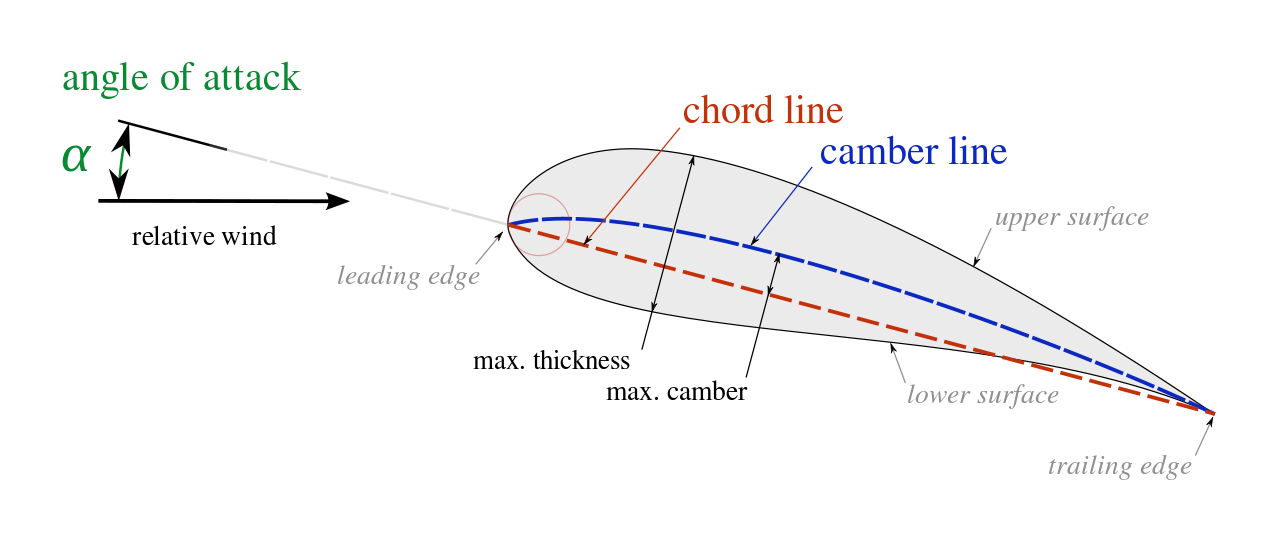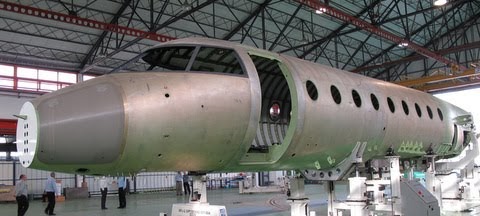

Angle of incidence (AOI)-the angle between the chord line of a blade and rotor hub. Angle of attack (AOA)-the angle measured between the resultant relative wind and chord line. Resultant relative wind-relative wind modified by induced flow. Induced flow-the downward flow of air through the rotor disk. Trailing edge-the rearmost edge of an airfoil. As an induced airflow may modify flightpath velocity, relative wind experienced by the airfoil may not be exactly opposite its direction of travel. This is rotational relative wind for rotary-wing aircraft and is covered in detail later. Relative wind-defined as the airflow relative to an airfoil and is created by movement of an airfoil through the air. The rotational velocity of the rotor blade is lowest closer to the hub and increases outward towards the tip of the blade during rotation. AIRFOIL TERMINOLOGY PLUS
For helicopter rotor blades, flightpath velocity is equal to rotational velocity, plus or minus a component of directional airspeed. For airfoils on an airplane, the flightpath velocity is equal to true airspeed (TAS). Flightpath velocity-the speed and direction of the airfoil passing through the air.Leading edge-the front edge of an airfoil.The profile thickness and thickness distribution are important properties of an airfoil section.

By varying the point of maximum camber, the manufacturer can tailor an airfoil for a specific purpose.

The location of maximum camber and its displacement from the chord line are expressed as fractions or percentages of the basic chord length. Maximum camber (displacement of the mean camber line from the chord line) and its location help to define the shape of the mean camber line. The shape of the mean camber is important for determining aerodynamic characteristics of an airfoil section. Camber refers to curvature of the airfoil and may be considered curvature of the mean camber line. The chord line connects the ends of the mean camber line.
Mean camber line-a line drawn halfway between the upper and lower surfaces of the airfoil. Chord-the length of the chord line from leading edge to trailing edge it is the characteristic longitudinal dimension of the airfoil section. The center of pressure, which is the chord-wise location about which the pitching moment is zero. The aerodynamic center, which is the chord-wise length about which the pitching moment is independent of the lift coefficient and the angle of attack. Two key parameters to describe an airfoil’s shape are its maximum thickness (expressed as a percentage of the chord), and the location of the maximum thickness point (also expressed as a percentage of the chord).įinally, important concepts used to describe the airfoil’s behavior when moving through a fluid are: This is sometimes described as the "British convention". Thickness measured perpendicular to the chord line. This is sometimes described as the "American convention" Thickness measured perpendicular to the camber line. It may be measured in either of two ways: The thickness of an airfoil varies along the chord. Its exact shape depends on how the thickness is defined The mean camber line is the locus of points midway between the upper and lower surfaces. The shape of the airfoil is defined using the following concepts: The chord length, or simply chord, is the length of the chord line and is the characteristic dimension of the airfoil section. The chord line is a straight line connecting the leading and trailing edges of the airfoil. The trailing edge is defined similarly as the point of maximum curvature at the rear of the airfoil. The leading edge is the point at the front of the airfoil that has maximum curvature. The geometry of the airfoil is described with a variety of terms.Ī key characteristic of an airfoil is its chord. The pressure gradient between these two surfaces contributes to the lift force generated for a given airfoil. lower surface) has a comparatively higher static pressure than the suction surface. upper surface) is generally associated with higher velocity and thus lower static pressure. The various terms related to airfoils are defined below:







 0 kommentar(er)
0 kommentar(er)
